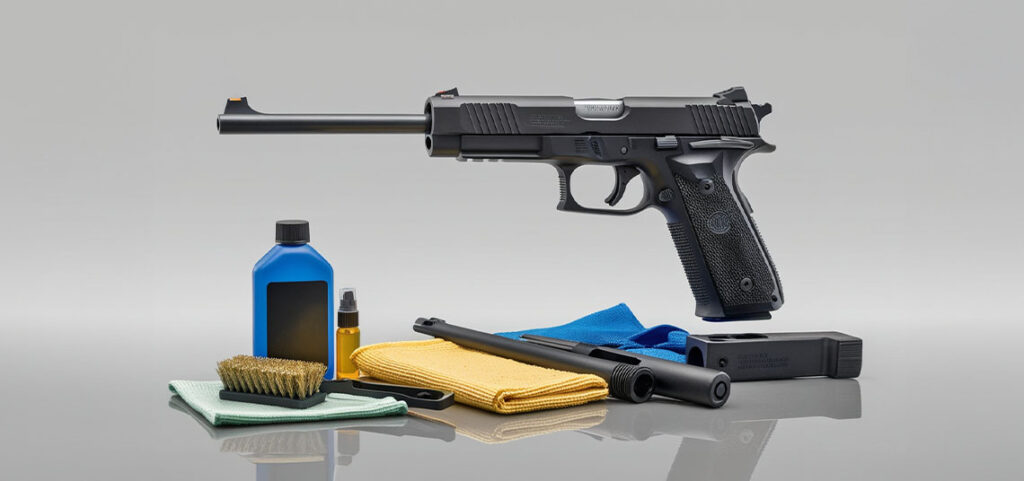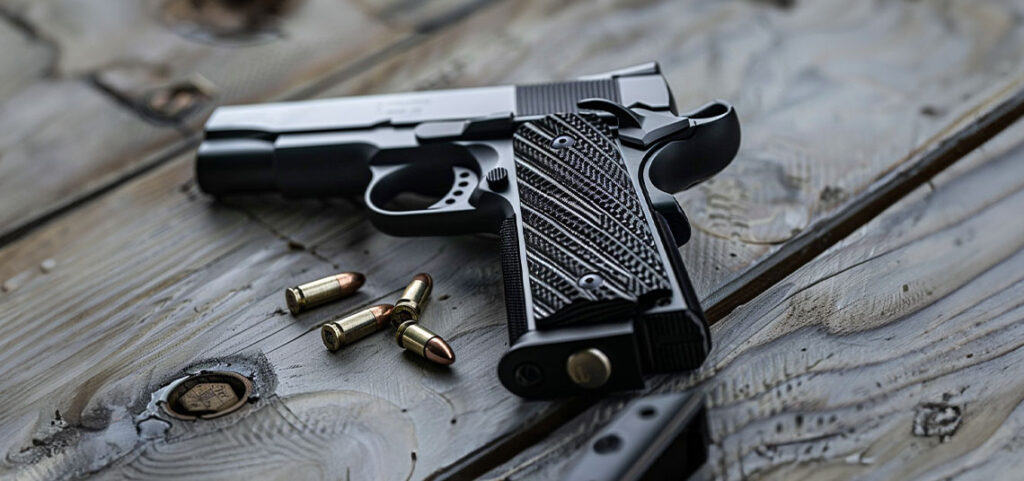Cleaning Handgun : 5 Simple Steps to Keep Your Gun Pristine
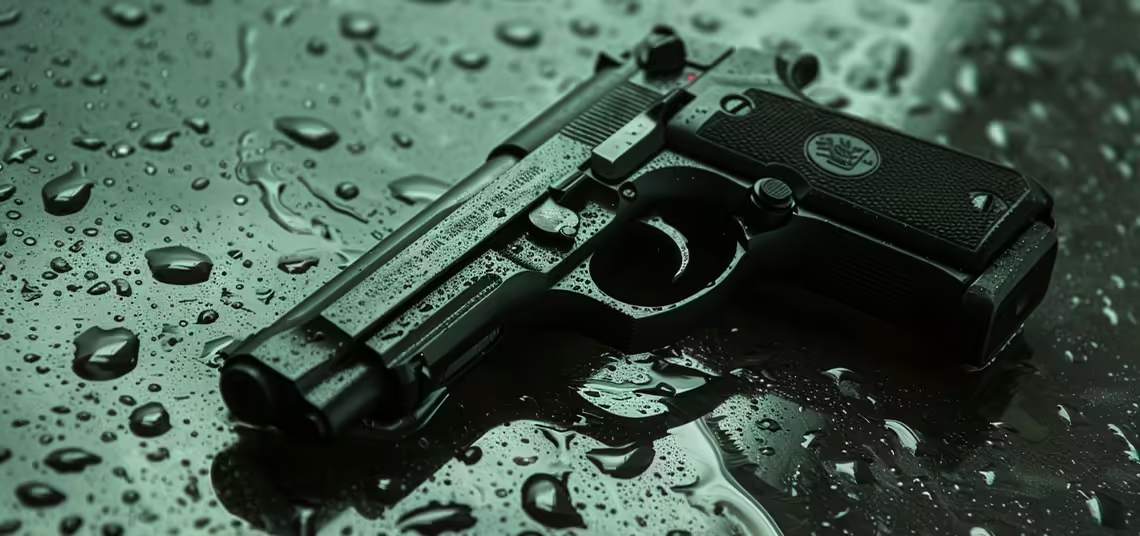
Cleaning handgun is vital for maintaining the weapon’s performance and safety over time. Regular and proper cleaning extends the life of the handgun while ensuring smooth operation of the firing mechanism. This guide, suitable for both beginners and experienced gun owners, details the cleaning process step-by-step, explaining what to watch out for at each stage. With the necessary tools, cleaning techniques, and tips for professional handgun cleaning, this guide makes it easier to keep your firearm in top condition.
The Importance of Cleaning Handguns
The role of cleaning handgun in firearm maintenance is critical for both safety and performance. Regular cleaning extends the life of the firearm while minimizing firing and functionality issues.
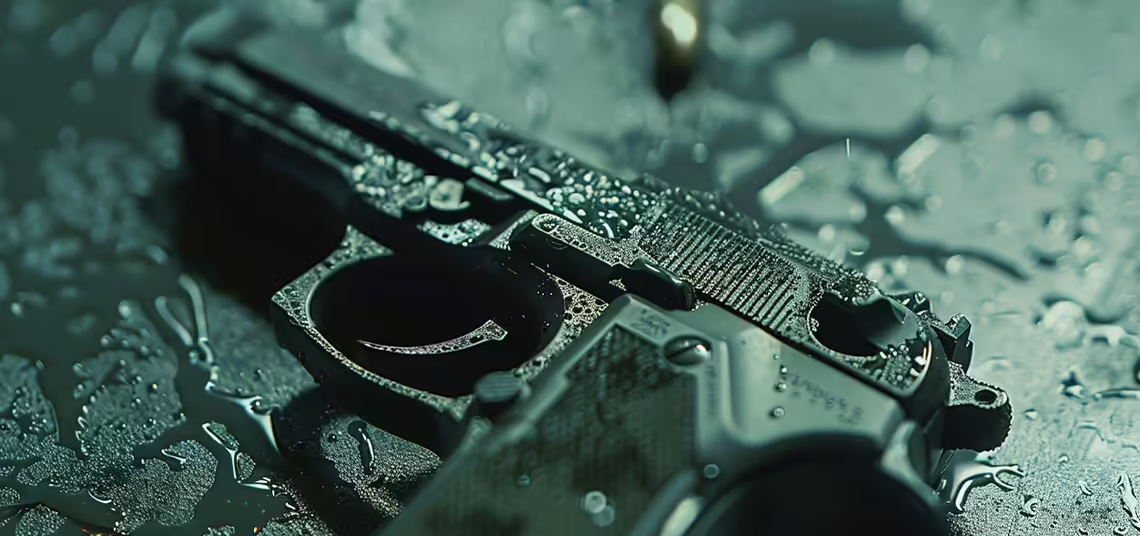
The Impact of Firearm Maintenance on Safety
Regular cleaning of the firearm primarily enhances user safety. Accumulation of dirt, oil, and other residues can cause malfunctions in the firing mechanism, leading to unexpected situations and accidents. Dirt accumulated in internal mechanisms can cause the firearm to fire unexpectedly or, conversely, to fail to fire, creating a safety risk in emergency situations. Therefore, handgun cleaning affects not only the performance of the firearm but also directly impacts the safety of the user and those around them.
The Advantages of Long-Term Firearm Maintenance
Handgun cleaning is also important for long-term maintenance of the firearm. Regular cleaning and maintenance prevent wear and tear such as rusting. This ensures a long operational life for the firearm. Long-term maintenance also saves costs since a well-maintained gun requires less frequent repairs or part replacements. Additionally, a regularly maintained handgun always operates at high performance and reliably fulfills its function when needed. A clean and well-maintained gun maintains shooting accuracy and delivers maximum performance when used.
Necessary Materials
Choosing the right materials for cleaning handgun is fundamental to an effective and safe cleaning process. The tools and cleaning solutions used should be suitable for the structure and material of the firearm.
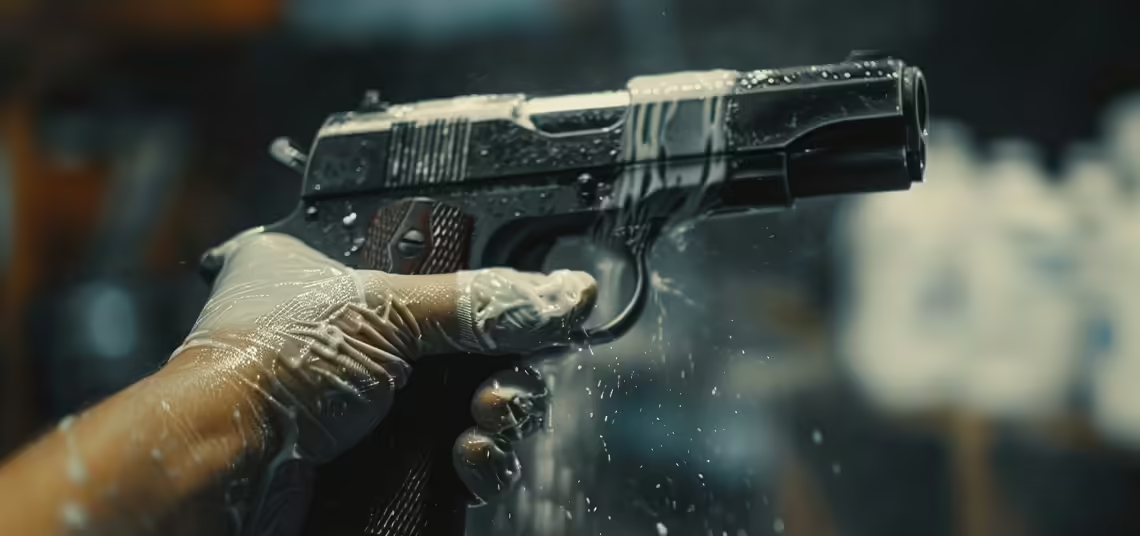
Cleaning Kits and Tools Used
Handgun cleaning kits specially designed for cleaning facilitate the process and typically include a cleaning rod, brushes compatible with different calibers, patches, and sometimes small screwdrivers. The cleaning rod, usually made of metal or durable plastic, is used to clean the inside of the barrel. Brushes are specially designed to remove dirt from the barrel and other narrow spaces. A patch, attached to the cleaning rod, is used to remove fine dirt and residues from the inside surface of the barrel. In addition, tools used for handgun cleaning may include a small brush or cloth for applying gun oil and grease. These tools ensure effective access and cleaning of all areas of the handgun.
Choosing the Right Cleaning Solution
The choice of cleaning solution for handgun cleaning is crucial for protecting the materials and ensuring effective cleaning. Gun cleaning solutions should be effective in dissolving oil, dirt, and residues while not damaging metal and other materials. Solutions available on the market are generally either water-based or petrochemical. Water-based solutions are usually less toxic and environmentally friendly but may be insufficient in removing all dirt and residues. Petrochemical solutions are stronger cleaners but require appropriate ventilation during use and may not be suitable for some plastic or rubber parts. When choosing a cleaning solution, consider the material of the firearm and the intensity of the cleaning required. Additionally, solvent-free, biodegradable products may also be preferred.
Step 1: Disassembling the Handgun
The first and most crucial step in the handgun cleaning process is properly disassembling the gun. This step allows access to all areas for thorough maintenance.
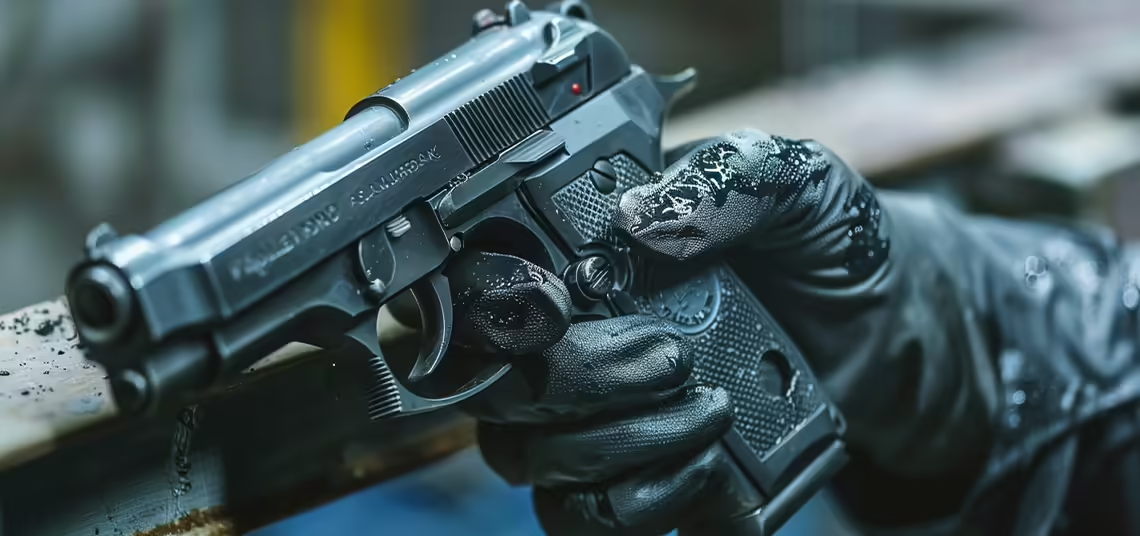
Safety Checks and Preparation
Before disassembling the handgun, it is essential to perform complete safety checks. First, ensure that the handgun is completely unloaded. Remove the magazine and check the barrel interior. Once it is confirmed that the firearm will not discharge, prepare the area for cleaning. The surface for cleaning should be flat and clean, facilitating a safer and more orderly process. Additionally, keep the tools and materials for cleaning within easy reach. These preparations facilitate the disassembly process and prevent any damage to parts.
Steps of the Disassembly Process
The disassembly process may vary depending on the model of the handgun, but generally follows similar steps. The handgun model’s user manual may contain specific instructions for disassembly. The first step is usually removing the magazine and ensuring the gun is in safety mode. Then, the disassembly of the handgun barrel and slide is performed. This is done by pulling back the slide and unlocking the relevant lock. Major components like the barrel and firing mechanism are carefully separated and prepared for cleaning. During disassembly, work on a soft surface and use appropriate tools if necessary to prevent damage to the parts.
This step lays the foundation for the handgun cleaning process and is critical for the successful completion of subsequent steps. Proper disassembly of the handgun allows access to all parts of the cleaning process and ensures the functionality of a cleaner gun in the long term.
Step 2: Initiating Cleaning Procedures
After the handgun is successfully disassembled, it is important to start the cleaning procedures. This step addresses the cleaning of fundamental components like the barrel and firing mechanism.
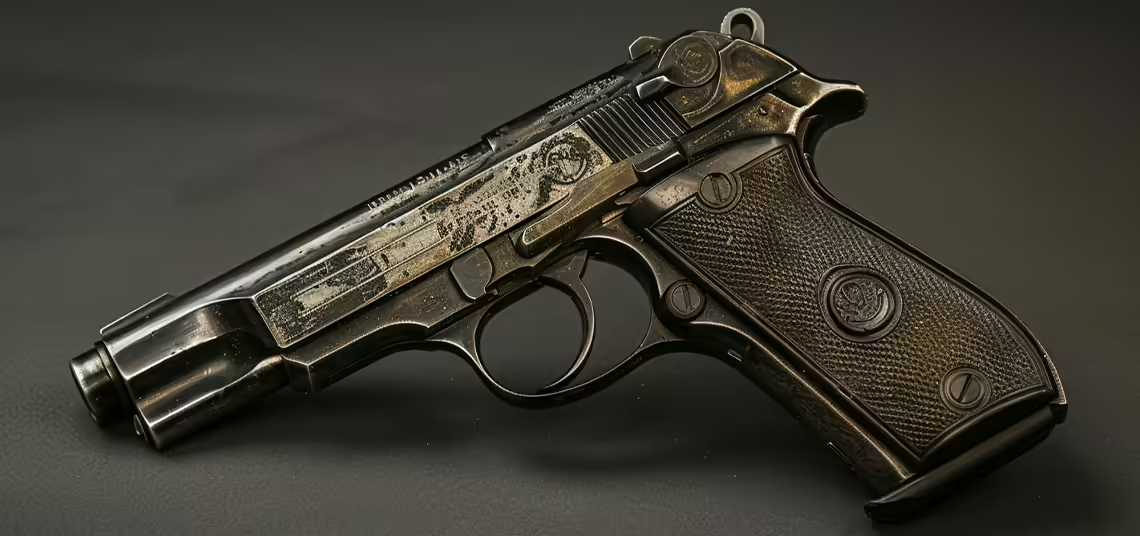
Cleaning the Barrel and Its Importance
Barrel cleaning is one of the most critical parts of handgun maintenance. Dirt, residues, and bullet marks accumulating inside the barrel can negatively affect the firearm’s accuracy and performance. For barrel cleaning, first select a cleaning brush of the appropriate size and moisten it with cleaning solution. The brush is pushed and pulled to evenly reach the entire length of the barrel.
This action helps dissolve all the dirt and residues inside the barrel. Then, a clean and dry patch is used to wipe the inside of the barrel and remove any remaining dirt. This process may be repeated several times to ensure all residues are removed from inside the barrel. Regular cleaning of the barrel extends the life of the firearm and ensures maximum performance during shooting.
Cleaning the Firing Mechanism
The cleaning of the firing mechanism is also a vital part of handgun maintenance. The firing mechanism controls the firing function of the firearm and interacts with the trigger. For cleaning this area, first, a special cleaning solution is applied to soften the dust and dirt on the mechanism. Using a small brush or cotton swab, reach the hard-to-reach corners and spaces of the mechanism and carefully clean these areas. After cleaning, ensure the mechanism is dry and lightly lubricated. Keeping these components clean and lubricated is essential for the smooth operation of the firing mechanism. Proper cleaning and maintenance ensure the firearm operates reliably and prevents potential malfunctions.
These two essential components’ proper cleaning enhances the overall performance and safety of the handgun. For gun owners, these procedures are critical steps that extend the life of the gun and ensure safe use.
Step 3: Removing Dirt and Residues
Carefully removing dirt and residues in the handgun cleaning process is critical for the long-term health and functionality of the firearm. At this stage, stubborn dirt and residues accumulated on the internal components of the gun are cleaned with special methods.
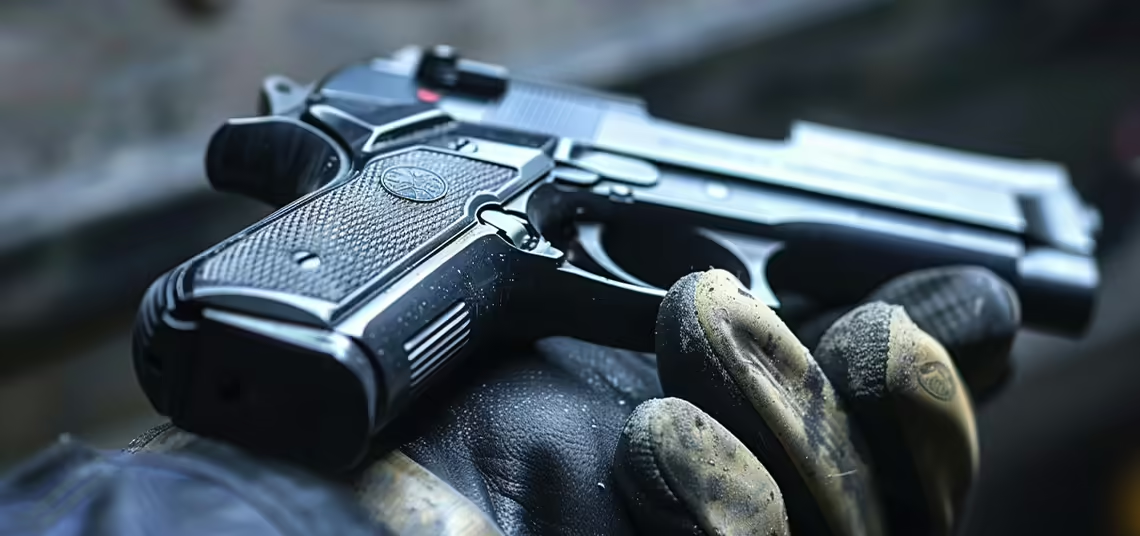
Careful Cleaning of Internal Components
Internal components of the handgun, such as firing pins, springs, and other mechanical parts, can become coated with dirt and waste materials over time. These components require careful cleaning because accumulated dirt can hinder the correct operation of the firearm. For cleaning, first use non-abrasive cleaners. Fine-tipped brushes are ideal for removing dirt from these components without causing damage. After applying cleaning solution to the dirty areas, gently brush with the brush and then wipe with a clean cloth. Particularly sensitive parts like springs and pins should be handled carefully during cleaning, ensuring no residues remain.
Recommendations for Tough Stains
Tough stains and stubborn residues can have adverse effects on the functionality of the firearm. Special cleaners can be used for such stains. For example, solvent-based cleaners designed for bullet or gunpowder residues are effective in dissolving these types of dirt. During the cleaning process, the use of such strong solvents should be controlled, and care should be taken not to damage the material of the firearm. Additionally, ultrasonic cleaners can also be used for tough stains. Ultrasonic cleaners use water and a special cleaning solution to effectively dissolve dirt and residues with high-frequency sound waves. This method provides comprehensive cleaning, especially in hard-to-reach areas.
The cleaning procedures performed in this step ensure the firearm is used more reliably and for longer periods. Effective cleaning of dirt and residues enhances the performance of the firearm and prevents potential malfunctions.
Step 4: Lubrication
The next important step in handgun cleaning is lubrication. This process is critical for ensuring the smooth operation of the firearm and preventing wear. Lubrication reduces friction between moving parts, extending the life of the firearm and optimizing shooting performance.
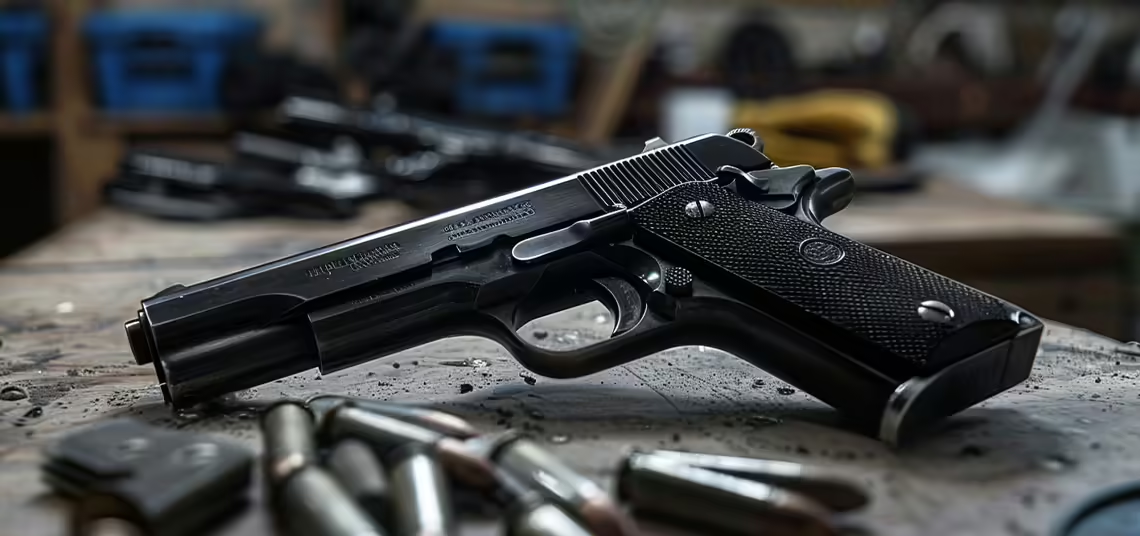
Proper Lubrication Techniques
Lubrication should be done immediately after the cleaning process. The most important thing to consider during lubrication is applying the oil in the right amount and in the right places. Excessive oil can lead to the accumulation of dirt and other particles, negatively affecting the operation of the firearm. Before starting the lubrication process, use a clean cloth to wipe off any excess cleaning solution or moisture residue. Then, apply a thin layer of oil. Moving parts such as the slide rails, trigger mechanism, and hammer should be carefully lubricated. These parts play critical roles in the firing and recoil functions of the firearm and are where the most friction occurs.
Choosing Materials for Lubrication
The choice of materials for lubrication is important for the protection and longevity of the firearm. Gun oils are specially formulated products that retain their protective properties even under high temperatures and pressure. The market offers mineral-based and synthetic oils specially produced for firearms. Synthetic oils generally provide effective protection across a wider range of temperatures and are more resistant to oxidation. When choosing an oil, consider the model of the firearm and the conditions of use. Additionally, the viscosity and stickiness properties of the oil also affect lubrication performance. Quality gun oil ensures the firearm operates more smoothly and provides protection against environmental factors such as rust.
This step is an indispensable part of the handgun cleaning process and, when done correctly, enhances the performance and reliability of the firearm while reducing maintenance costs.
Step 5: Reassembly and Final Checks
The final stage of handgun cleaning and maintenance is the reassembly of parts and the function tests of the firearm. This step is essential for verifying that the firearm operates correctly and completing safety checks.
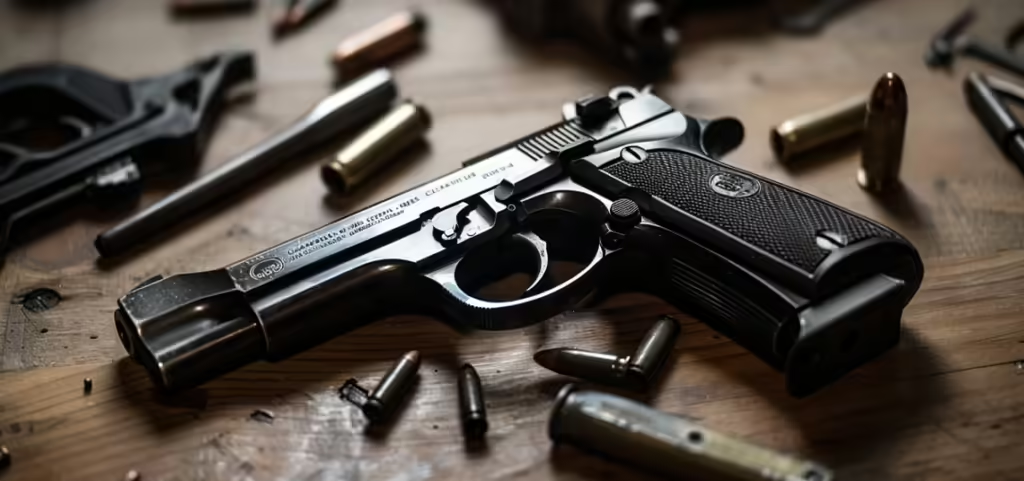
Reassembling the Parts
The reassembly process is performed in the reverse order of disassembly. Each part, now cleaned and lubricated, is ready to be placed back inside the firearm. During assembly, ensure that each part is correctly positioned and that no parts are damaged. Major components such as the barrel, slide, and trigger mechanism must be correctly installed. Once the parts are in place, secure them with pins and screws. During this process, check that all parts are tightly and securely mounted, as a loose assembly can negatively affect the safety and performance of the firearm.
Function Tests and Safety Checks
After reassembly is complete, proceed to the function tests of the firearm. These tests are conducted to ensure all aspects of the firearm function correctly. Check whether the trigger mechanism operates smoothly, the slide moves back and forth without issues, and the safety lock functions effectively. During function tests, ensure the firearm is unloaded and pointed in a safe direction. Additionally, a dry fire test can be conducted to verify if the firearm is ready to shoot. All tests should be performed carefully to confirm that the firearm can be used safely in the field.
This final step is an important part of the handgun cleaning process and guarantees that the firearm can be used safely and effectively. Proper reassembly and final checks ensure the safety of the firearm owner and the longevity of the gun.
Post-Maintenance Recommendations
After the handgun cleaning and maintenance are completed, the importance of regular maintenance and subsequent checks significantly increases. These recommendations ensure that your firearm always remains in top condition and guarantees long-term safety.
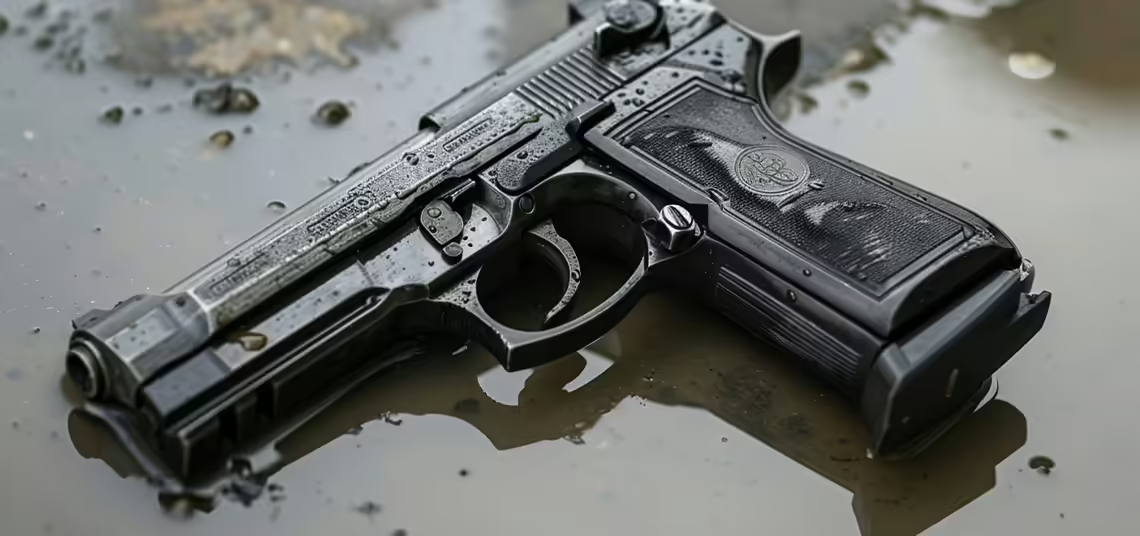
The Importance of Regular Maintenance
Handgun cleaning is not a one-time task but a continuous process. Regular maintenance is critical to maintaining the performance of the firearm, preventing potential malfunctions, and extending its usage life. Depending on the frequency of use of your firearm, cleaning and maintenance routines should be planned. An actively used handgun, especially after intensive shooting, should be regularly cleaned. Additionally, handguns that are not used for extended periods should also be checked and cleaned periodically. This prevents damage from rust or other environmental factors that could occur in the internal mechanisms.
Post-Cleaning Checklist
After handgun cleaning and maintenance are completed, using a checklist to ensure the firearm functions properly can be beneficial. The checklist should include the following steps:
- Checking the reassembly is done correctly: Ensure all parts are correctly and securely positioned.
- Repeating function tests: Verify that basic functions of the firearm, such as the firing system, trigger mechanism, and safety lock, operate smoothly.
- Reviewing the lubrication status: Ensure the lubrication has been adequately and correctly applied.
- Performing a general visual inspection: Check if there are any signs of scratches, cracks, or other damages on the exterior of the firearm.
- Conducting a firing test: If possible, perform a test shoot in a safe shooting area to confirm the firearm operates smoothly. This checklist ensures that your firearm always operates safely and efficiently. Regular maintenance and checks allow you to detect any potential issues early and assist in taking appropriate actions when needed.
Handgun cleaning is one of the most important ways to maintain the performance and safety of your firearm. The detailed steps we’ve discussed in this process ensure your firearm remains long-lasting and performs at a high level with each use. From disassembly to cleaning, lubrication, and final checks, each stage directly impacts the safety and functionality of your firearm.
For all your firearm maintenance and cleaning product needs, visit “https://zibgrips.com/“. This site offers a wide range of products and detailed product descriptions for your firearm maintenance needs. Additionally, you can reach out via the contact information on the site for any questions and support requests. By acquiring all the necessary tools for professional handgun maintenance, you can ensure your firearm is kept in the best condition.

